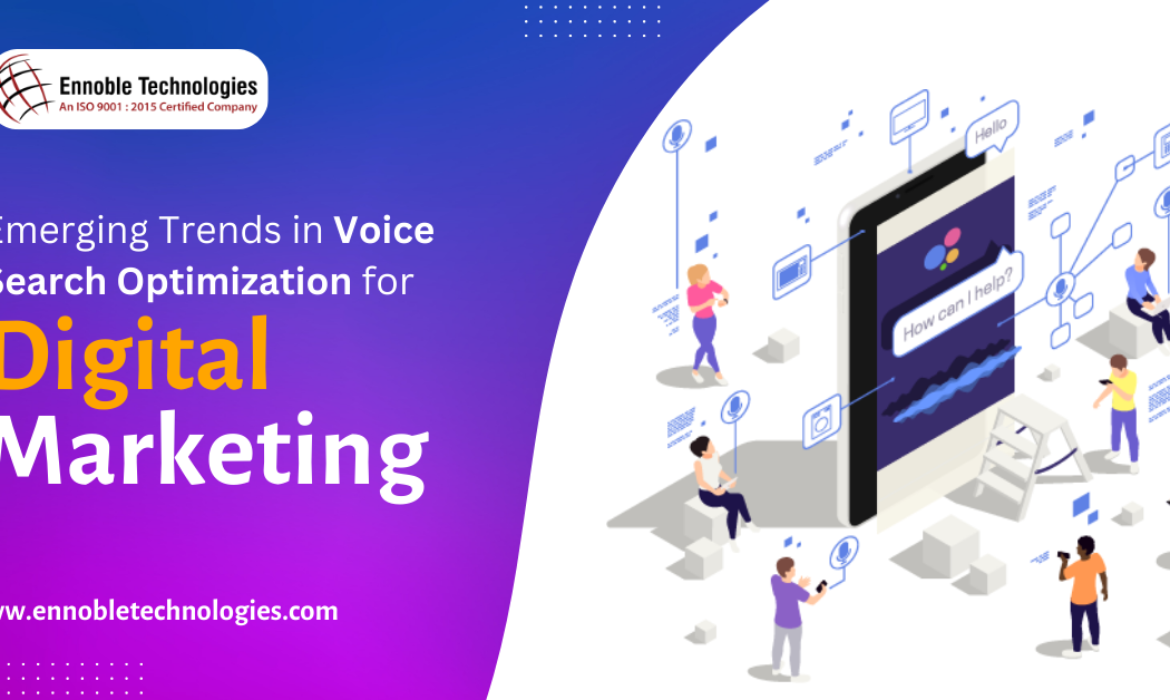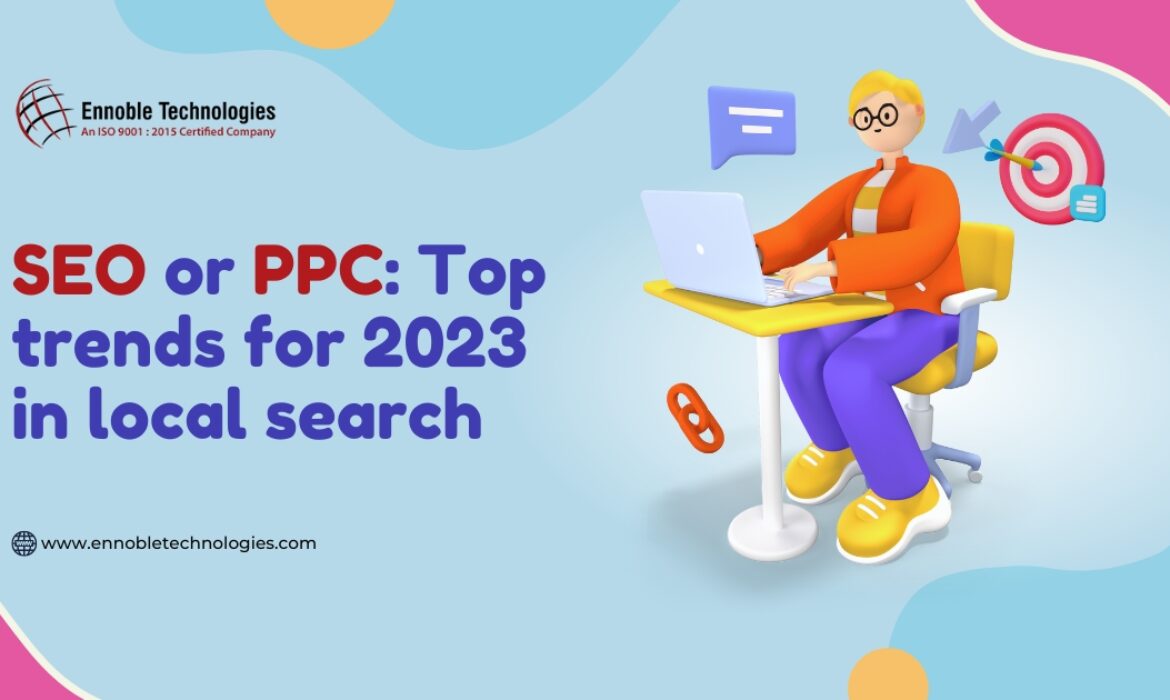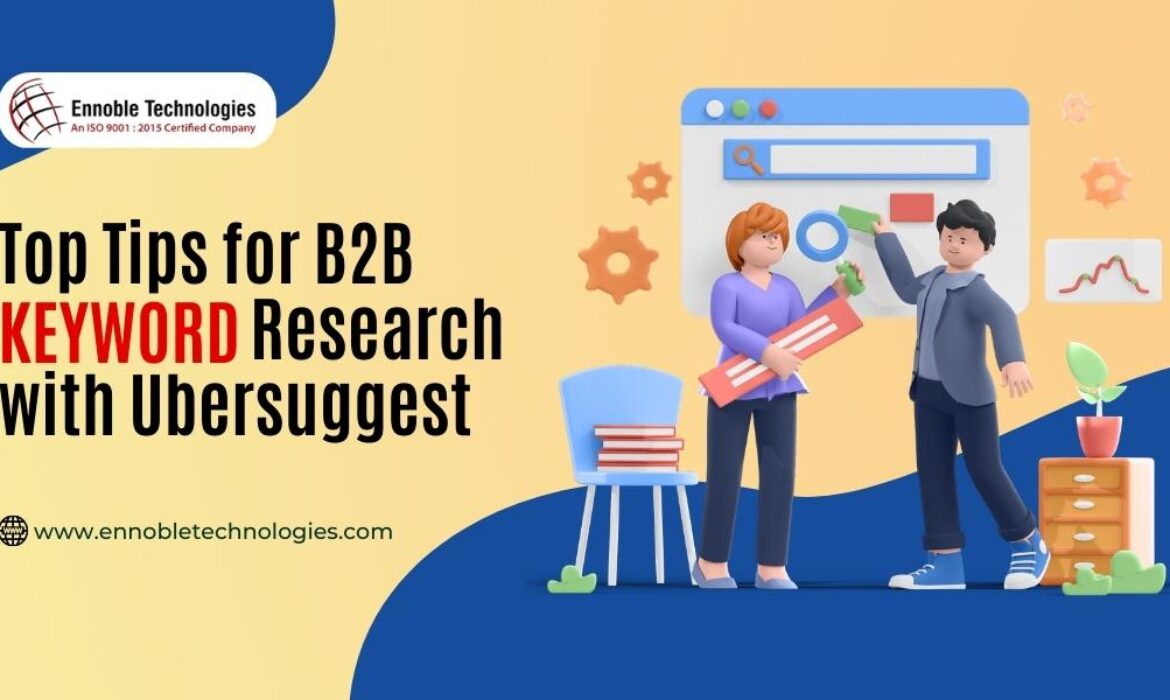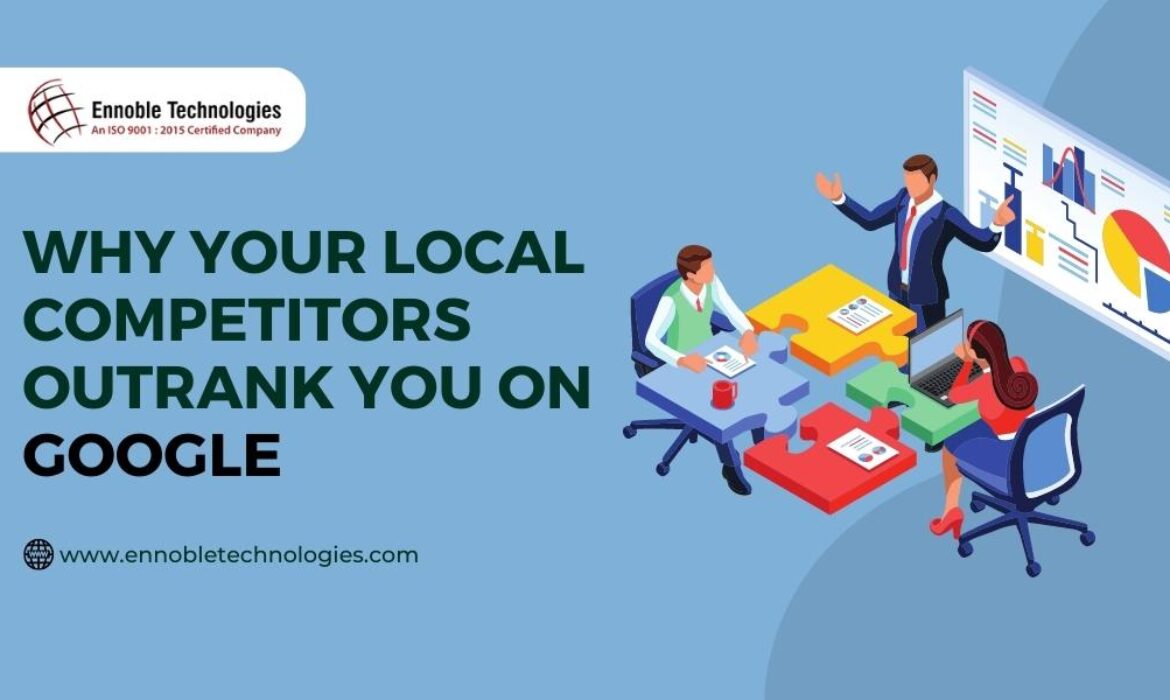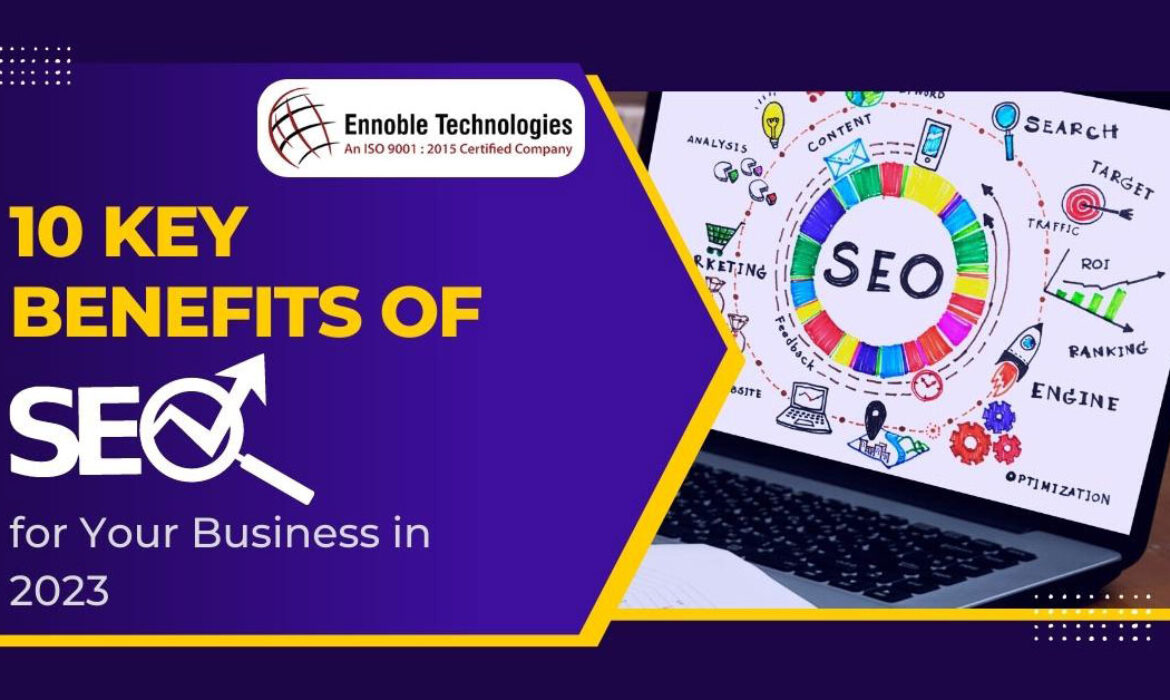Prevent E-commerce Fraud with Our Tips: A Comprehensive Guide
In the age of digital advancement, E-commerce has become an integral part of our lives, providing us with the convenience of shopping from the comfort of our homes. However, this convenience comes with its own set of challenges, one of the most prominent being E-commerce fraud. As the E-commerce landscape continues to evolve, so do the tactics used by fraudsters to exploit unsuspecting consumers and businesses. In this article, we will delve into the world of E-commerce fraud and provide you with valuable tips to safeguard yourself and your business against these threats.
Understanding E-commerce Fraud:

E-commerce fraud refers to any deceptive or illegal activity carried out online with the intention of financially harming individuals or businesses. It can take various forms, such as credit card fraud, account takeovers, identity theft, and chargeback fraud. Fraudsters use sophisticated methods to exploit vulnerabilities in the E-commerce ecosystem, targeting both consumers and merchants. The financial losses incurred due to E-commerce fraud are substantial and can have far-reaching consequences.
Top Tips to Prevent E-commerce Fraud:

1. Implement Strong Authentication Measures: To protect your E-commerce platform, it’s essential to have robust authentication measures in place. This could include two-factor authentication (2FA), requiring customers to confirm their identity through a second channel like a mobile app or email. Similarly, merchants should have strong authentication protocols for accessing their accounts.
2. Regularly Update Security Software: Keeping your E-commerce website’s security software up to date is crucial. Regular updates often include patches for vulnerabilities that could be exploited by fraudsters. Additionally, consider using a firewall and encryption to secure customer data and transactions.
3. Educate Your Customers: A well-informed customer is less likely to fall victim to fraud. Provide educational resources on your website, such as tips on creating strong passwords, recognizing phishing emails, and understanding common E-commerce scams. Empower your customers to be vigilant online shoppers.
4. Monitor Transactions Closely: Implement real-time transaction monitoring to detect any suspicious activity. Unusual purchasing patterns, multiple transactions from different locations, or unusually large orders could be signs of fraud. Having automated systems in place to flag and investigate these transactions can help prevent losses.
5. Employ Machine Learning and AI: Machine learning and artificial intelligence can analyze vast amounts of data to detect patterns indicative of fraudulent activity. These technologies can help E-commerce platforms identify and prevent fraud in real time, adapting and improving their accuracy over time.
6. Use Address Verification System (AVS): AVS compares the billing address provided by the customer with the address on file with the credit card company. If they don’t match, it could indicate a fraudulent transaction. Implementing AVS can add an extra layer of security to your E-commerce transactions.
7. Implement a Review Process for High-Risk Orders: For orders that seem suspicious or high-risk, have a manual review process in place. This might involve contacting the customer to verify the order or requesting additional identification. It may add a slight delay to the process, but it can prevent fraudulent transactions.
8. Secure Payment Gateways: Choose a reputable and secure payment gateway for processing transactions. These gateways often have built-in fraud detection mechanisms and encryption to protect sensitive payment information.
9. Stay Informed About New Threats: E-commerce fraud tactics are constantly evolving. Stay updated on the latest fraud trends and techniques. Engage with industry forums, attend webinars, and follow security experts to stay ahead of potential threats.
10. Build Trust Through Transparency: Transparency builds trust with your customers. Clearly communicate your refund and return policies, terms of use, and privacy practices. This fosters customer confidence and reduces the likelihood of chargeback fraud.
Staying Ahead of Emerging Threats:

As the landscape of E-commerce fraud continues to evolve, so must your strategies to prevent it. Cybercriminals are constantly adapting and finding new ways to exploit vulnerabilities. Here are some additional measures to consider as you stay ahead of emerging threats:
1. Data Encryption: Ensure that all sensitive data, such as credit card information and personal details, are encrypted during transmission and storage. This makes it much harder for hackers to intercept and decipher the data.
2. Regular Audits and Assessments: Conduct regular security audits and assessments of your E-commerce platform. This can help you identify potential vulnerabilities and weaknesses in your security infrastructure that could be exploited by fraudsters.
3. Collaborate with Industry Partners: Stay connected with industry associations and partners to share information about emerging fraud trends. Collaborative efforts can help you gain insights into the latest threats and strategies to counter them.
4. Continuous Employee Training: Educate your staff about the latest E-commerce fraud tactics and prevention techniques. Employees who handle customer information, transactions, and security protocols should be well-informed and trained to recognize and respond to potential threats.
5. Implement Behavioral Analysis: Utilize behavioral analysis tools to detect anomalies in customer behavior. This technology can identify unusual patterns in user interactions and flag potentially fraudulent activities.
6. Geo-Blocking and IP Filtering: Implement geo-blocking and IP filtering to restrict access to your E-commerce platform from high-risk regions or known malicious IP addresses. This can significantly reduce the chances of unauthorized access.
7. Customer Verification Methods: Depending on the nature of your business, consider implementing customer verification methods such as photo identification uploads or voice recognition. This can add an extra layer of security, especially for high-value transactions.
8. Secure Third-party Integrations: If your E-commerce platform integrates with third-party services, ensure that these integrations are secure and regularly updated. Vulnerabilities in third-party components can be exploited to gain access to your system.
9. Communication Channels: Maintain clear and secure communication channels with your customers. Fraudsters often attempt to impersonate E-commerce businesses through emails, SMS, or social media. Educate your customers about how you will communicate with them and be cautious of any suspicious messages.
10. Legal and Regulatory Compliance: Stay compliant with relevant laws and regulations related to data protection and online transactions. Compliance not only helps protect your business but also builds trust among your customers.
Frequently Asked Questions

Q: What is e-commerce fraud?
A: E-commerce fraud refers to fraudulent activities conducted over the internet with the aim of stealing sensitive information or money.
Q: How can I recognize phishing scams?
A: Phishing scams often involve deceptive emails requesting sensitive information or containing suspicious links. Always verify the sender’s identity.
Q: What is multi-factor authentication (MFA)?
A: MFA is an authentication method that requires users to provide two or more verification factors to gain access to an account.
Q: How do I educate my customers about security?
A: Offer guidelines on creating strong passwords, recognizing phishing attempts, and staying vigilant online.
Q: What is real-time transaction monitoring?
A: Real-time transaction monitoring involves using tools to track transactions as they occur to identify any suspicious activity promptly.
Q: How does AI help in preventing e-commerce fraud?
A: AI can analyze transaction data and user behavior to detect anomalies and patterns associated with fraudulent activity.
Conclusion:
The battle against E-commerce fraud is an ongoing one, and the tips mentioned in this article serve as a foundation to create a secure environment for both E-commerce businesses and customers. By combining technological solutions, customer education, and vigilant monitoring, you can significantly reduce the risk of falling victim to fraudulent activities.
Remember, E-commerce fraud prevention is not a one-size-fits-all solution. Every business has its unique risks and challenges. Regularly reassess your security measures, stay informed about the latest threats, and be prepared to adapt your strategies accordingly. The effort you invest in preventing E-commerce fraud will not only safeguard your financial interests but also contribute to a safer and more trustworthy online shopping experience for everyone involved. By working together as a community, we can make E-commerce a more secure and resilient marketplace for the future.
Also Read: Maximize Your Reach with PPC Advertising – Ennoble Technologies
Emerging Trends in Voice Search Optimization for Digital Marketers
With the highly increasing demands for smart devices and virtual assistants, voice search has become a useful factor for digital marketers. Voice search optimization is the process of optimizing your website content so it can rank on voice assistants like Siri, Alexa, or Google Assistant. It involves optimizing your content, using natural language processing (NLP), and focusing on long-tail keywords. In today’s article, we will discuss the emerging trends in voice search optimization for digital marketers and how it can help grow your business.
Voice Search and its Popularity
Voice search has grown tremendously in recent years. It is expected to gain more attention in the future. Many suggest that voice search might cover up to 50% of all searches a year or two from now.
However, people prefer using voice search because it is faster, more convenient, and provides a hands-free experience. Additionally, voice search is becoming more accurate and reliable. Soon, it will be an even more attractive option than other forms of searches.
How Voice Search Optimization is Important for Digital Marketers?
Digital marketers need to optimize their content to rank well on voice search. It is an effective way to reach their target audience faster and easier. Optimizing for voice search can help businesses improve their search rankings, increase website traffic, generate leads, and more. Additionally, it can help businesses improve their user experience.
However, optimizing for voice search can be challenging. It requires different methods than the search engine optimization (SEO) we use for websites. Businesses need to focus on conversational language and long-tail keywords. Also, one needs to ensure the content is readable and structured to be easily understood.
Emerging Trends in Voice Search Optimization
Using Natural Language Processing (NLP)
NLP is an AI technology that helps computers understand human language. With voice search, however, we use our conversational language and ask questions as we do with others. NLP helps voice assistants understand these questions and provide relevant answers. You can optimize your content for NLP by using natural language.
Featured Snippets
Featured snippets are brief snippets of text that appear at the top of search engine results pages (SERPs). They provide the answer a user is searching for. Users are more likely to receive answers from featured snippets, making them a crucial part of voice search optimization. You can use featured snippets by providing clear and to-the-point answers to commonly asked questions.
Local Search Optimization
Local search optimization means preparing our content for local search queries. For instance, people ask about nearby businesses, products, or services. Including relevant information about them in our content can help in ranking easily.
Focusing on Long-Tail Keywords
Long-tail keywords are longer, more specific search phrases that generally have lower search volumes but higher conversion rates. Users are more likely to use long-tail keywords as they ask questions briefly and conversationally.
Using Schema Markup
Schema markup is a type of microdata that helps search engines understand the content on a web page. It can help voice assistants by providing more accurate and relevant answers. Digital marketers can optimize their content by using schema markup on their websites.
How to Use Voice Search Optimization?
Here are some key strategies that can help you:
Preparing Content
You need to prepare your content for voice search by using conversational language, targeting specific long-tail keywords, and providing clear and direct answers to frequently asked questions.
Building a Friendly Website
Ensure your website is mobile-friendly, optimize page load speed, and provide structured data using schema markup.
Creating Skills
You can create voice-activated skills for smart devices to increase user interaction. This can include games, quizzes, and other engaging content that makes users feel attached and comfortable with it.
Developing a Plan
You should focus more on keyword research, content creation, and website optimization. You should also monitor your results regularly and come up with new changes as needed.
Conclusion
Voice search optimization can be quite helpful for digital marketers. If someone wants to reach their target audience faster and improve their online visibility, optimizing their content for voice search can help to gain positive results. This can be the way to stay ahead of the competition and provide customers with a better user experience.
However, digital marketers need to keep up with new advancements and make strategies accordingly. They will also need to focus on other areas such as privacy and security measures for users.
Also Read: What are the benefits of link building for SEO? – Ennoble Technologies
What are the benefits of link building for SEO?
Despite its simplicity, link building is a crucial part of SEO. The procedure can be challenging at times. The goal is to lure other websites to link back to yours. The site’s popularity and authority in the desired search engines are prerequisites for realizing this goal.
Google also considers user engagement when determining page rank. So merely a person clicking and exiting won’t do. The time spent on a website also is recorded in the search engine logs, which are also used to determine the genuineness of the website. So, the more visitors who visit your site, the better.
Clearly, there are many upsides to link building, and in this blog post, we will explore them all so you can get a firm grasp on the topic’s genuine importance for search engine optimization.
Improved Search Engine Rankings
One of the most important factors that search engines employ to determine a page’s ranking is the number and quality of inbound links from other similarly high-quality and reputable websites. Search engines place more stock in a website as an authoritative and relevant source of information if it has received links from other credible websites.
One factor determining where a website appears in search engine results is Google’s PageRank algorithm. When establishing a page’s worth and relevance, PageRank considers both the number and quality of inbound connections.
Research shows that websites with more backlinks have a better chance of ranking higher in SERPs. For example, according to a Moz study, websites with high domain authority and high-quality backlinks score higher in search results than those with low and low-quality ones. Remember, it’s not always about the quantity; the quality also matters. Having genuine, qualitative, trustworthy content on your website will help you stay on top in the search results.
A search engine, “Google,” “Yahoo,” or “Bing,” anything for that matter, wants to render the best service of information to the internet users. They want to avoid risking it by showing bad quality websites with wrong info on top, and they very well would appreciate a website with genuine content that they can showcase.
Increased Website Traffic
Creating inbound links to your website has significantly enhanced visitor numbers. Referral traffic, or visitors that come to your site from another, increases when other websites link to you. Referral traffic consists of users that landed on your site after clicking a link posted on another website.
The number of people visiting your site from a link on another site can rise, and the chances that your site will appear in search engine results can also increase.
As mentioned, your website’s search engine rankings will improve with more backlinks from high-quality sites. As a result, you may see increased natural search engine traffic.
Enhanced Brand Authority
Strategic link development can enhance a website’s reputation and authority. You earn authority and credibility as a resource in your industry when other trustworthy websites connect to yours.
Search engines give it greater weight if other, more established sites link to your website. This may raise your website’s search engine positioning and enhance visitors.
Also, obtaining backlinks from trustworthy websites will assist in promoting your company and raising its position online. The more your link appears on other websites, the more authority they will attribute to you as a subject matter expert.
Improved Indexing and Crawling
Building backlinks to your site can help improve search engine indexing by alerting spiders to new information on your site.
A search engine scans a website by following links from one page to another. Many backlinks from reputable sources increase the likelihood that search engine spiders will discover your website’s new pages.
Search engines can index your site’s pages better if you provide relevant connections across the area. If you do this, search engines will more likely display your site’s pages prominently. Search engines will know that a page is worthy of indexing if linked to another website.
Conclusion
To wrap it all up, link building is an important step to be implemented for any successful SEO strategy. With that in place, your website will have better search engine rankings, increase website traffic, enhance brand authority, and improve indexing and crawling of website pages on search engines.
By getting backlinks from genuine websites and authoritative sources, you indirectly leave a clue for search engines to believe your website is trustworthy. Remember, the goal is to establish an image of the algorithms so that people can read your website and get truthful information without any misleads.
So, start implementing link building today and see the positive impact it can have on your website’s search engine rankings and overall online presence.
Also Read: SEO or PPC: Top Trends for 2023 in Local Search – Ennoble Technologies
SEO or PPC: Top Trends for 2023 in Local Search
An organization’s digital marketing strategy is crucial to gaining significant exposure and achieving commendable results. Among all types of website traffic, those from search engines are the most effective! It is through the search engine that brands are exposed to potential consumers and are able to reach the right audience.
As most of the search queries consist of many transactional and commercial targets, you can gain more customers with the help of search engine traffic. In terms of search engine traffic, you can use both SEO and PPC, which help attract high-intent and quality traffic to your website. As for PPC, video, display, and other methods help reach better traffic. But do you need clarification on PPC Vs SEO, as which one will be best for your business this year?
Read this blog to find out which one is better for the reach of your business in 2023!
Top Trends In This Space That Make One Strategy Better
Though both these digital marketing strategies are effective in their own way, certain features and trends make them preferable over the other. Check out these top trends to determine your chosen strategy!
- For Quick Results: If you are searching for quick results, PPC is the one you need to look out for! With different PPC campaigns, you can see almost instant results. Right after the approval of PPC campaigns, you can see traffic pouring into your website.
But, if you use SEO in this case, the results will take considerable time. Use it in case of –- Advertising product launches
- Operating event-centric campaigns
- Seasonal promotions
- Consistent results: SEO will be the strategy if you are looking to build consistent results over time. However, if you use this strategy, you must have patience and invest a lot to get the most effective results. It consumes a lot of time because the strategy involves many steps, from keyword research to link building!
An effective SEO strategy will take time before you get a real Return on Investment. It can help your business by offering long-term benefits with sustainable traffic. So, for consistent results this year and in the coming years, SEO will rule over search results and will be your prominent marketing strategy.
- To Build Authority Site: SEO is key if you are trying to establish yourself or your business as a reliable source online! You must invest in top-notch content and SEO this year to achieve effective results. And this can be done if the main aim of your website is not a quick sale!
This strategy can be effective if your website delivers quality content and value with enhanced editorial standards. The major focus here will be on fostering different traffic channels and SEO. This will lead to establishing a long-term relationship with the potential audience, which will be profitable too!
- For High Potential Client: Are you looking for ways to reach your target audience? PPC is the most effective strategy for brands looking to target a narrow audience! PPC will help you narrow down the target audience based on different parameters, like age, gender, buying preferences, and others. However, if you correctly implement SEO, you can achieve this target too, but PPS is the right fit for this job!
If you are looking to narrow down your clients based on certain parameters on different platforms, PPC will be the best option to go with. Suppose you are a brand that sells different wedding accessories. In this case, you need to target users of different platforms like Facebook or Instagram, for those who got engaged recently! Besides that, PPC is extremely helpful in cases of dominate search results too! Even if your website has managed to achieve higher positions in SERP with the help of effective SEO, adding PPC campaigns will boost the click-share.
Conclusion
In the era of tough competition over the internet, it is important to know which digital marketing strategies should brands use in 2023. Are you finding yourself confused in this matter too? The strategy to select will depend on the kind of business you own. And depending on the same, you may opt for SEO or PPC, or at certain times, you can employ both these strategies together!
Because, in 2023, it is quite common that business owners will not think of or select one from SEO or PPC. A combination of these techniques is the best option that you can go with for this year or years to come. To boost the reach of your business and attract more traffic, combine both these strategies for efficient results!
Also Read: Business Tips to Use Facebook Marketplace 2023 – Top 5 Ways – Ennoble Technologies
Top Tips for B2B Keyword Research with Ubersuggest
B2B keyword research is crucial for every business. It is necessary to get more leads, increase website traffic, and improve search engine rankings. With the help of powerful tools like Ubersuggest, businesses can get and use effective keyword strategies to reach their target audience and achieve their market goals. This article will explore top tips for B2B keyword research with Ubersuggest. Also, we will learn how you can leverage this powerful tool to improve keyword strategy and grow more with your business.
What is B2B Keyword Research?
B2B is business-to-business, which refers to marketing and selling products or services from one business to another. B2B keyword research is the process of identifying and analyzing the keywords that businesses use to search for products or services. These keywords are relevant to the needs of their business. Ubersuggest is a helpful tool that anyone can use to conduct effective keyword research. The tool will help you identify the right keywords, analyze their competitors, and develop keyword strategies that drive more traffic and generate higher leads. Keyword search volume, keyword difficulty, and CPC (cost per click) are among the excellent features and services it provides.
7 Top Tips for B2B Keyword Research with Ubersuggest
1. Understanding Who Your Target Audience Is
The first step in B2B keyword research is identifying your target audience. This means understanding their search intent as well. Ubersuggest can be used to know the most common search queries and topics your target audience seeks.
Understanding customers’ search intent helps in knowing their interests which will help you create relevant content that satisfies their needs. You can gather information through different methods, such as customer surveys, website analytics, and other market research.
2. Identifying the Right Keywords
Once you have closely examined your target audience, the next step should be identifying the right keywords. Ubersuggest offers features that can help you conduct keyword research and analyze keyword metrics. However, there are different keywords: short-tail, long-tail, and branded.
You can rely on this tool to find relevant keywords that are easy to rank and have a high search volume. You can also try social media and customer feedback to gain valuable information.
3. Creating a List of Potential Keywords
With the information you collected, you can start developing a list of potential keywords and phrases that your target audience may use to search for your products or services. This list can be used as a starting point for keyword research.
4. Analyzing Your Competitors
Analyzing your competitors’ websites can help you go ahead with them. Identifying your top competitors is beneficial in analyzing their keywords and content to understand their strengths and weaknesses.
Ubersuggest can be used to compare your website’s performance with your competitors. By analyzing your competitors, you can know the weaknesses in your content strategy and improve your keyword research strategy.
5. Creating a Keyword Strategy
After you have identified the right keywords and analyzed your competitors, the next thing to do is to create a keyword strategy. This involves developing a list of high-value keywords and putting them into relevant content.
With the help of this research tool, you can track your keyword ranking and make significant progress over time. Also, it will help you change your strategy and improve your website’s performance.
6. Using Long-Tail Keywords
In addition, businesses should also focus on long-tail keywords – such as specific keyword phrases that are usually less competitive but are more targeted to their ideal customer. The tool can help businesses identify and use long-tail keywords in their keyword strategy.
7. Prioritizing Commercial Intent Keywords
At last, one should focus on keywords with commercial intent that indicate what a user is searching for to get the product or service. Identifying and prioritizing keywords with commercial intent in their keyword strategy can help generate effective ideas.
Additional Tips for Effective B2B Keyword Research
Apart from that, here are some additional tips for making B2B keyword research effective:
- Stay up-to-date with the latest trends in your industry and changes in search engine algorithms.
- Continuously analyze and replan your keyword strategy to improve your website’s performance.
Conclusion
B2B keyword research is a crucial aspect of any business’s marketing strategy. Using powerful tools like Ubersuggest, businesses can make keyword research effective, identify keywords, analyze their competitors, and develop a keyword strategy that drives traffic and generates leads. By following the tips mentioned in this article, businesses can get better at doing B2B keyword research.
Why Your Local Competitors Outrank You on Google
The importance of ranking high on Google is well known to everyone. Ranking on the first page of search results can have a significant impact on your revenue. There is no doubt that this is the most effective way to gain more traffic to your website and increase sales.
However, it can be frustrating to see your local competitors outrank you. Especially when you know your website is just as good as theirs. So, you need to know what are those potential reasons behind the downfall of your ranking. This way, you should be able to work on the weak spots and come up with a better solution to solve them. This article will explore why your local competitors might be outranking you on Google, including what steps you can take to regain your position.
8 Reasons why you are unable to perform well on Google
1. Lack of optimization
One of the biggest reasons your local competitors consistently outperform your website is that it isn’t well-optimized for search engines. This means that the website isn’t structured or designed to make it easy for Google to understand and rank it.
Common optimization mistakes include poor website design, slow loading times, and a lack of meta tags and descriptions. To ensure your website is optimized, it’s critical to have a clear structure, fast loading times, and relevant keywords in meta tags and descriptions.
2. Poor quality content
Another reason your competitors outrank you is that your website has inadequate or duplicate content. Poor quality content can cause several problems, including poor search engine visibility and less visitor engagement. It is necessary to regularly update your website with fresh and relevant information. It would be more effective if you focused on creating original, well-written, and easy-to-read content. Additionally, one should avoid posting duplicate content as they may penalize your website.
3. Insufficient backlinks
Backlinks from other websites that point to or connect to your website are key to search engine visibility. If your website doesn’t have relevant and high-quality backlinks, it can be difficult for search engines to understand whether it is relevant and valuable.
To get high-quality backlinks, your website should have useful content that other websites will want to link to. You can also reach out to other websites in your industry and ask for help. Or you can participate in online communities and forums to build relationships and increase the visibility of your website.
4. Negative reputation
Customers are more likely to trust businesses with a positive reputation. If your website has received negative reviews or mentions, it can impact your search engine visibility and stop potential customers from reaching you. Unfortunately, negative reviews can also lead to lower engagement and reduced conversions. To gain a positive reputation, you need to respond to any negative reviews or mentions of your website and address those raised issues. You can also ask satisfied customers to leave positive reviews.
5. Unstructured data
By unstructured data, we mean data that isn’t organized properly, such as information about your products, services, or location. When such information isn’t well structured, it can make it difficult for search engines to understand your website. Using structured data formats, such as Schema.org, would be a very effective way to provide clear and concise information about your business. This helps to improve the visibility and relevance of your website.
6. Outdated SEO practices
Outdated SEO practices, such as keyword stuffing and overusing meta keywords, can negatively impact your site’s visibility and make it difficult for others to find you. When Google finds these issues, it may penalize your website and lower search engine rankings.
To ensure your SEO practices are up-to-date, it’s imperative to know about the latest SEO techniques and strategies. You should be focused on creating high-quality, original content relevant to your target audience and stay away from false or spammy tactics.
7. Technical issues
Like other reasons, technical issues can also impact your search engine visibility. Technical problems can vary from simple website design, slow loading times, and broken links to more complex problems like website coding and functionality issues.
To identify and fix technical problems on your website, it’s wise to regularly check your website for broken links, slow loading times, and other functionality issues. Tools such as Google’s Search Console can help identify and fix such issues.
8. Limited Social Media Presence
Social media can play a significant role in improving your search engine visibility. Promoting your products/services on social media platforms can create a strong online presence that will improve your site’s position.
Additionally, social media platforms can provide valuable backlinks to your website, which can help increase your search engine ranking.
You can rank higher in search engines by consistently posting high-quality content and engaging with your audience on social media.
Conclusion
Following the right strategies is vital to make your website appear in the top search results. Local competitors will outrank you on Google if your website isn’t properly optimized, has poor quality content, insufficient backlinks, or has technical issues. To gain increased visibility on search engines, it’s imperative to work effectively in these areas.
Ever wondered Why Digital Marketing is Important for Your Business? or How to Choose The Right Digital Marketing Agency? Click to read more.
Also Read: The Future of Digital Marketing Trends, Predictions, and Opportunities
10 Key Benefits of SEO for Your Business in 2023
What’s SEO?
SEO stands for Search Engine Optimization. SEO helps increase the bulk and the quality of traffic to your website from search engines. SEO focuses mainly on unpaid traffic, popularly known as “organic” traffic, rather than paid traffic. To put it bluntly, it helps improve the visibility of your products or services by ranking higher when they get searched. The more visible your website is, the more audience you are to get.
Search Engine Optimization is a process of optimizing your business website so that it appears on the first page when users search for your product or service. The formulas and techniques used to drive traffic through search engines, including Google, Yahoo, Bing, etc.
Why SEO is Essential
The internet has changed the way we communicate and buy products. Searchers look for businesses from their smartphones or desktops. Hence, if you want your business to reach the maximum audience, you need to optimize your business for search engines.
SEO has become an essential part of running a successful business. It helps your business finds new customers, improve page rankings, and convert targeted traffic into leads and sales. It is referred to as one of the most valuable tools for businesses and brands that helps in making people aware of their products or services. It helps in building better relationships with the audience/ customers by positioning your pages on the top results.
The way SEO works and provides value to a business is hard to measure, in many ways. When one needs to get audiences’ attention and gain trust, SEO comes as an effective method and creates healthy connections between you and your clients.
How does SEO Work?
If you run a website, it is important to know how SEO works. Algorithm updates and search trends change in a few ways you use search optimization across your web pages.
SEO works on several factors, such as a computerized algorithm, what people are looking for, keywords or search terms, and most importantly, which search engines your targeted audiences use. The formulas and techniques used to drive traffic through the search engines such as Google, Yahoo, Bing, etc.
Top 10 Benefits of SEO for your Business
Here are 10 benefits of having SEO in business:
Helps in Getting Better User Experience
There are several ways you can work on your business to boost user experience and SEO is one of them. The better user experience you provide, the more leads you generate, and the better brand review you get.
Provides a Great Number of Leads
The higher your pages rank, the more traffic you receive to your page. You get higher rankings by focusing on better catchphrases, meta depictions, and labels.
Your Website Becomes Easier to Find
What great Search engine optimization does is ensure your connections and site structure are organized in a simple-to-use way. The quicker your site answers users’ taps the better it is for your business. The users remain longer and might be changed over into a client.
Higher Conversion Rate
The great positioning of your site on any web search tool can fundamentally lead to higher conversion rates. Once you figure out how to make a place in the top position, your business will be getting more audience reach without putting in extra effort and time.
Cost Less and Add More
Search engine optimization is a relatively cheaper way to grow your business than others. It can help you with saving money from various divisions of your business.
Helps Building Brand Credibility and Trust
Appearing on top searches might give your prospects that you are one of the top players in the business. This way you build trust and reliability for your brand or services. As you start getting visibility on your web pages, your business starts becoming trustworthy among them.
More Reaches
Most of the clicks go to the site that is positioned on the first page. Making your website SEO optimized will improve your ranking and help in getting a higher audience or client reach than others.
Grow Business
The more traffic you get, the simpler it will become to expand your business. To do so, your business must be addressing the client’s issues rather than anything else.
Any piece of the business must stay in the competition. You would rather not lose your potential clients by ignoring the fact that your rivals have a better website than yours. Good SEO practice maintains your positioning and helps you stay in the game.
Stay in Competition
Any piece of the business must stay in the competition. You would rather not lose your potential clients by ignoring the fact that your rivals have a better website than yours. Good SEO practice maintains your positioning and helps you stay in the game.
Improves Speed of your Website
It might be obvious to all businesses that without a fast and engaging website, no one is going to come your way. Having a slow website will eventually affect your reputation and you won’t get enough reach.
Conclusion
SEO helps businesses with acing the opposition. Without SEO, it is somewhat impossible to get a higher audience reach and stay in the competition. SEO is a set of techniques that help your business grow by ranking higher on top of the search engines. This way, you get enabled to make plans and implement them more effectively by keeping those tactics in mind.
For any additional information, call us on Phone: +91 9121010610 / +91 9100625301 or write to us at info@ennobletechnologies.com You can learn more about our services or browse through our story at https://ennoblegrp.com/


